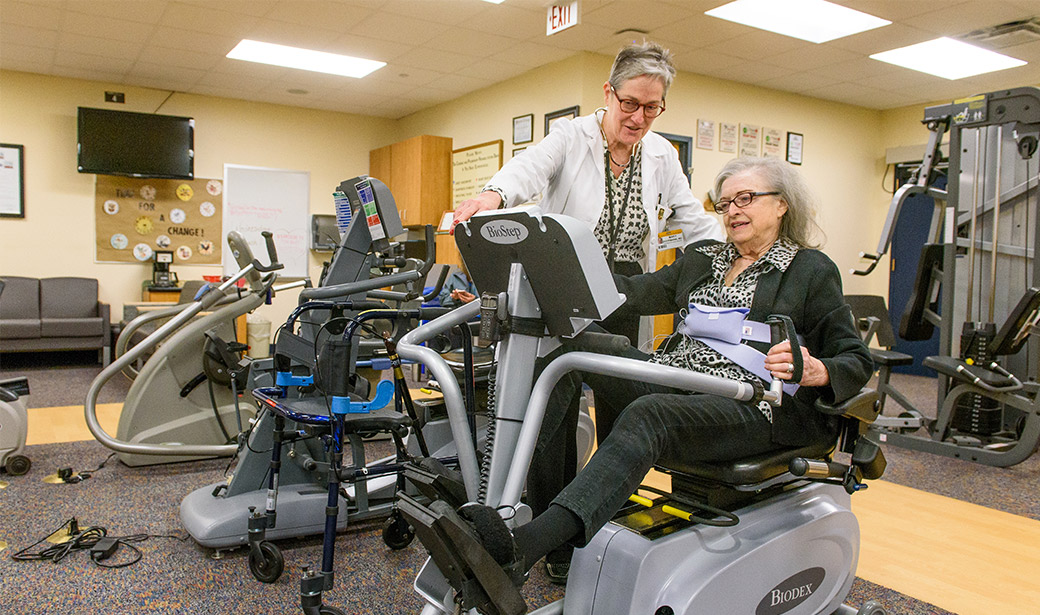At first glance, the Cardiac and Pulmonary Rehabilitation facility looks like a typical gym. Treadmills, stationary bikes and strength-training equipment abound, and the latest pop music plays in the background. However, instead of personal trainers, an interprofessional team of exercise physiologists and nurses monitor the progress of their patients, all of whom have a cardiovascular health condition.
These participants are in Fit for Life, a program offering individualized exercise training plans to those with heart, lung or vascular disease. In addition to a fitness regime, patients have access to educational classes and a multidisciplinary team of physicians, dietitians, physiologists and registered nurses. One patient may have one-on-one sessions with a nutritionist for understanding a heart healthy diet, and another may choose to see a physical therapist if orthopaedic pain is impeding progress. Whatever the case, the goal is to improve patients’ health outcomes and return them to their daily lives.
“The nurses themselves are all highly trained and certified cardiac and pulmonary rehab specialists,” says Mary Dohrmann, MD, medical director of cardiac rehabilitation at University Hospital. “They know how to handle every unexpected thing.”
The team does more than just assist individuals at the rehabilitation facility. While they are still at the hospital, Fit for Life specialists will visit with patients who have had a qualifying event and have been referred by a physician. They educate patients about the Fit for Life program and encourage them to participate once they are discharged.
The goal is to establish a relationship with the patient that will continue throughout the rehabilitation process. This continuum of care ensures a smoother transition and better outcomes for the patient.
Mary Bledsoe is one such patient. Bledsoe started the program in March 2017 to build up strength after a heart procedure. She already sees improvements in her physical condition.
“I’ve been able to wean off of oxygen when I do everyday activities,” Bledsoe said. “Plus the staff here are fabulous. They understand my limitations and we work really well together.”
Dohrmann points out that the Fit for Life program does more than care for a patient’s physical well-being; it addresses emotional needs, too. Before beginning the program, all participants are screened for depression to ensure better outcomes on all levels.
“If we can get a depressed person to complete the program, that person will have less depression after completing the program, regardless of any other therapy they might be receiving for depression,” Dohrmann says. “This might be due to the environment in which you can see that everyone is struggling to meet their own personal goals, not just you.”
As with any treatment plan, family and friends play an important role in the rehabilitation process. In addition to providing moral support, this group can remind patients to take medications, drive them to their follow-up appointments and convey information to their physicians during those appointments.
At the end of the program, the patients take the same tests they completed on entry to evaluate their endurance as well as how much they have learned so there are measurable outcomes for each individual.
“The real success for us is seeing patients incorporate what they have learned into their daily lives,” Dohrmann says.



